 Panna cotta, at its most basic, is just milk and cream jelly. The jelly may be served as it is, but that'd be quite boring.
Panna cotta, at its most basic, is just milk and cream jelly. The jelly may be served as it is, but that'd be quite boring.How to liven up plain panna cotta?
Make it heart-shaped. Make it in bright colours.
Looking good is half the battle won. Tasting good is the other half.
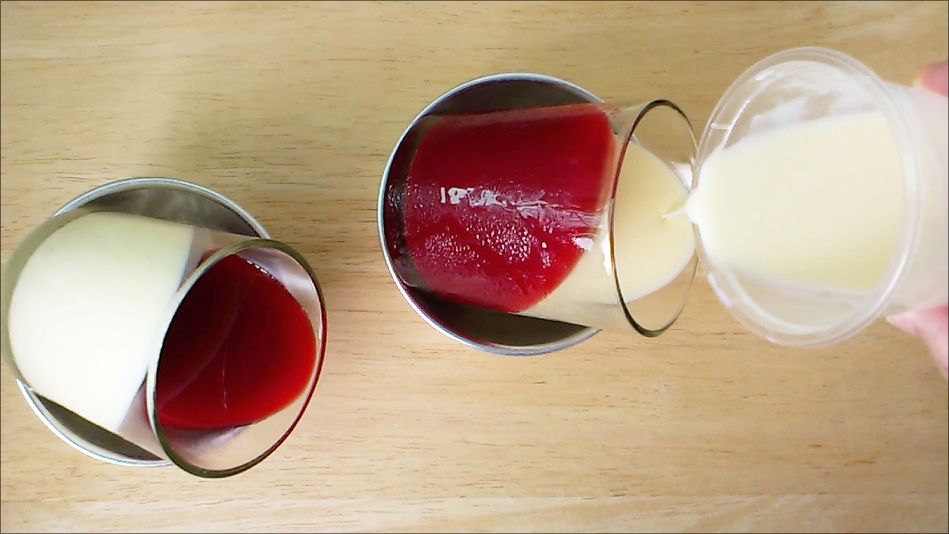 Raspberries work like a charm in panna cotta. They brighten the blandness of milk and cream with a tart fruitiness. In return, the milk and cream tone down the sourness of raspberries. One would be lesser without the other.
Raspberries work like a charm in panna cotta. They brighten the blandness of milk and cream with a tart fruitiness. In return, the milk and cream tone down the sourness of raspberries. One would be lesser without the other.Heart-shaped panna cotta is perfect when you want a light dessert. Why? Because the glass looks like it's filled to the brim, but it's actually half empty. There's really not much in there! And 3/4 of what's there is just juice, milk and water.
Here are a few good-to-knows that you might want to know:
1. How much gelatine powder to replace gelatine leaf?
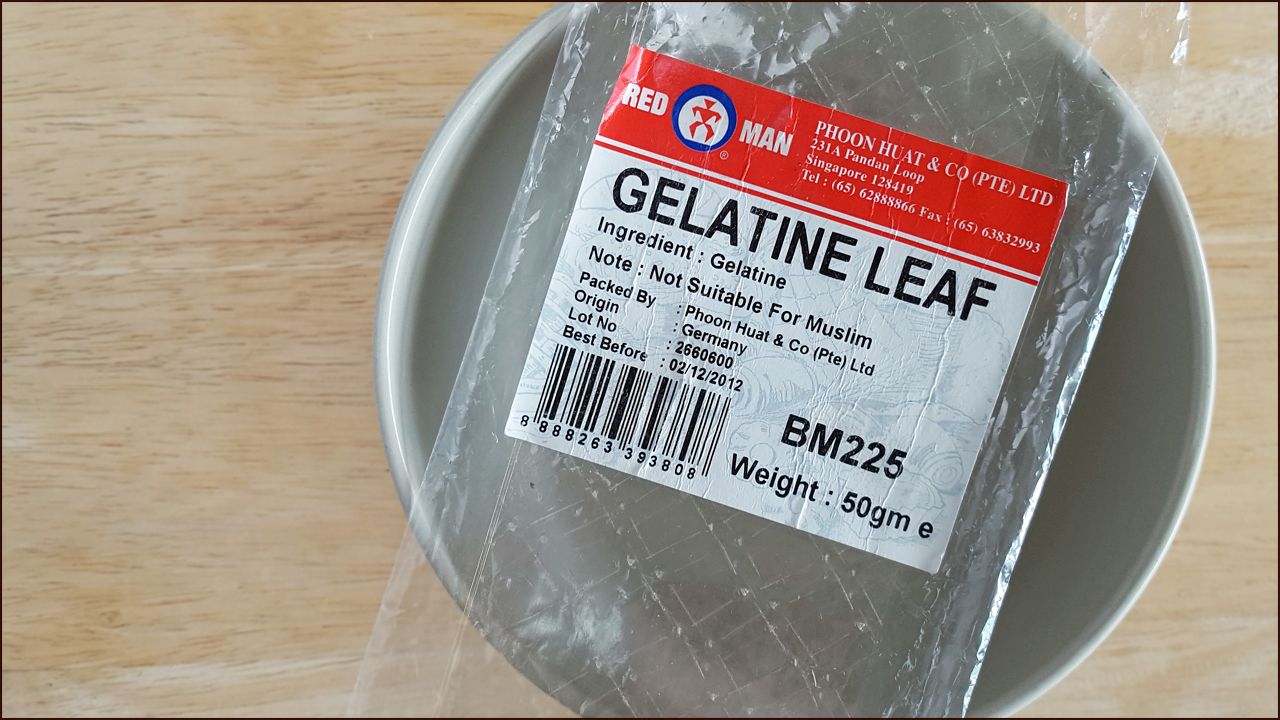
That depends on your gelatin powder's Bloom number. To replace 1 gelatine leaf with gelatine powder, use:
2.5 g or 3/4 tsp for Bloom 160-180
2.0 g or 2/3 tsp for Bloom 190-225
2. What is Bloom number?
All gelatines have a Bloom number to indicate their quality of gel strength, taste and clarity. The higher the number, the better the quality.
2. What is Bloom number?
All gelatines have a Bloom number to indicate their quality of gel strength, taste and clarity. The higher the number, the better the quality.
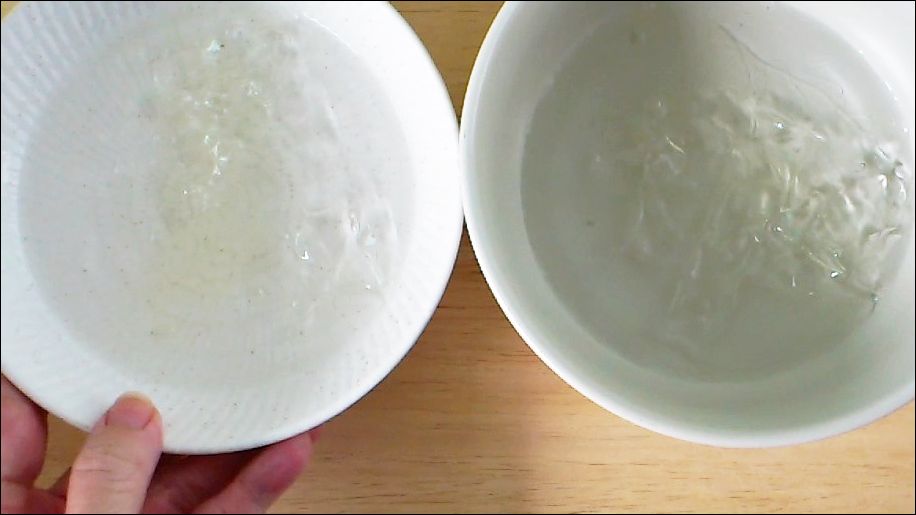 3. How to bloom and melt gelatine powder?
3. How to bloom and melt gelatine powder?Place the powder in a bowl. Sprinkle with just enough room temperature water to wet it thoroughly. (For 2 g powder, use 6 g water). Place the bowl in a hot water bath, and proceed as in the recipe below.
4. Where can you buy gelatine leaves?
Supermarkets, baking supply shops (Bake King, Phoon Huat, etc), and online (bakeking.com.sg, amazon.com, taobao.com, parknshop.com, sainsburys.co.uk, etc).
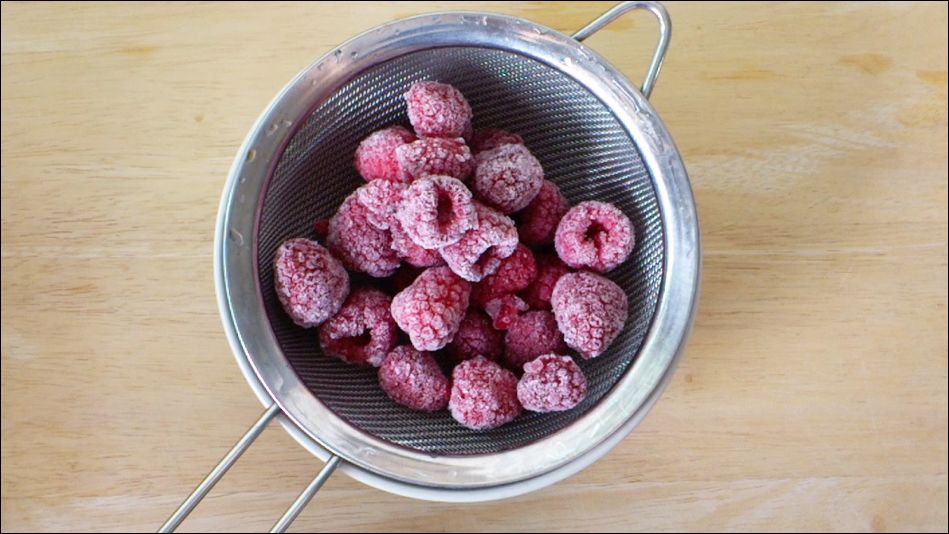 5. Why do I use frozen instead of fresh raspberries?
5. Why do I use frozen instead of fresh raspberries?Because they're much cheaper than fresh raspberries. The 1 kg pack I buy is S$13.70 (about US$10). Fresh ones are S$6.50 for 170 g.
6. Can you use fresh raspberries instead?
Sure. But you can't mash fresh raspberries with a spatula.
7. What can you use instead of raspberries?
It's a free world. Please feel free to use whatever you like.
8. Can you use water instead of milk? Milk instead of water? Milk instead of cream? "Something" instead of milk? Whole milk instead of full-fat milk? "Normal milk" instead of full-fat milk? Etc instead of etc?
Please refer to point #7.
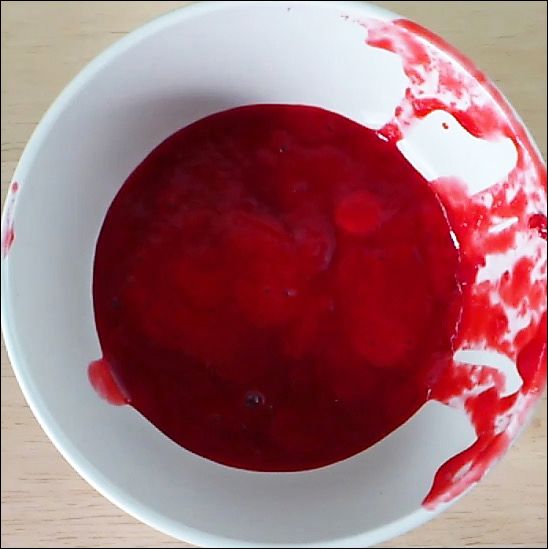 RASPBERRY PANNA COTTA RASPBERRY PANNA COTTA(Recipe for 2 persons) Cream jelly 1 gelatine leaf, soak in ice water till soft 1/2 tbsp sugar 80 g full-fat milk, room temperature 80 g dairy cream with 35% fat, cold 1 gelatine leaf, soak in ice water till soft 1 tbsp sugar 60 g water, room temperature 140 g frozen raspberries thaw, mash and sieve to yield 100 g juice 1. To make cream jelly, squeeze gelatine leaf to remove excess water. 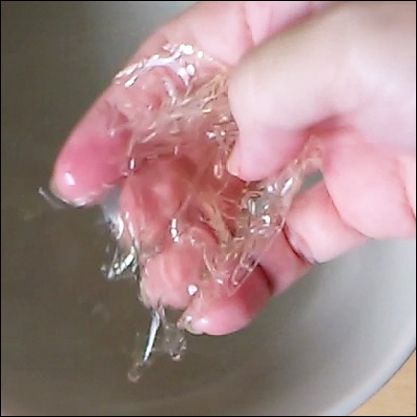 Place in bowl. Place bowl in hot water bath. Add 1/2 tbsp sugar. Stir till gelatine and sugar dissolve. Add half of milk. Stir thoroughly. Add remaining milk. Stir thoroughly. Remove bowl from water bath. Add cream. Stir thorougly. Taste and add more sugar if necessary. Place in bowl. Place bowl in hot water bath. Add 1/2 tbsp sugar. Stir till gelatine and sugar dissolve. Add half of milk. Stir thoroughly. Add remaining milk. Stir thoroughly. Remove bowl from water bath. Add cream. Stir thorougly. Taste and add more sugar if necessary.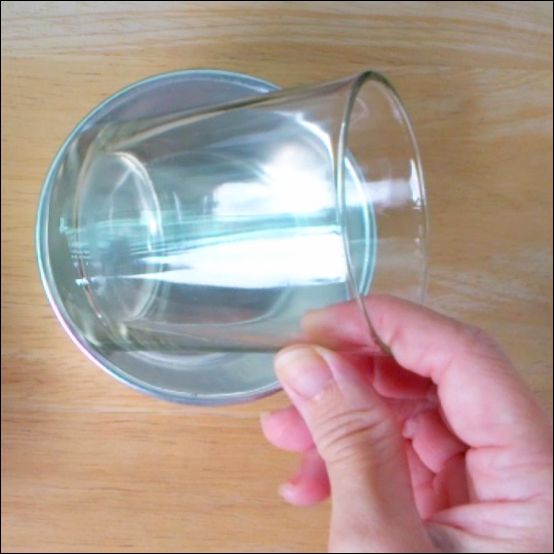 3. To assemble, rest two 8 x 7 cm glasses at 45º angle. Fill 1 glass with cream jelly. Fill other glass with raspberry jelly. Refrigerate both glasses till jelly is set, about 2 hours. 3. To assemble, rest two 8 x 7 cm glasses at 45º angle. Fill 1 glass with cream jelly. Fill other glass with raspberry jelly. Refrigerate both glasses till jelly is set, about 2 hours.4. Leave remaining jelly at room temperature for 1 hour, then refrigerate to chill but not set. 5. When jelly in glasses is set, turn glasses 180º vertically. Fill cream jelly glass with remaining raspberry belly. Fill raspberry jelly glass with remaining cream jelly. Refrigerate till set, about 1 hour. Turn glasses upright. Cover. Refrigerate till ready to serve. |
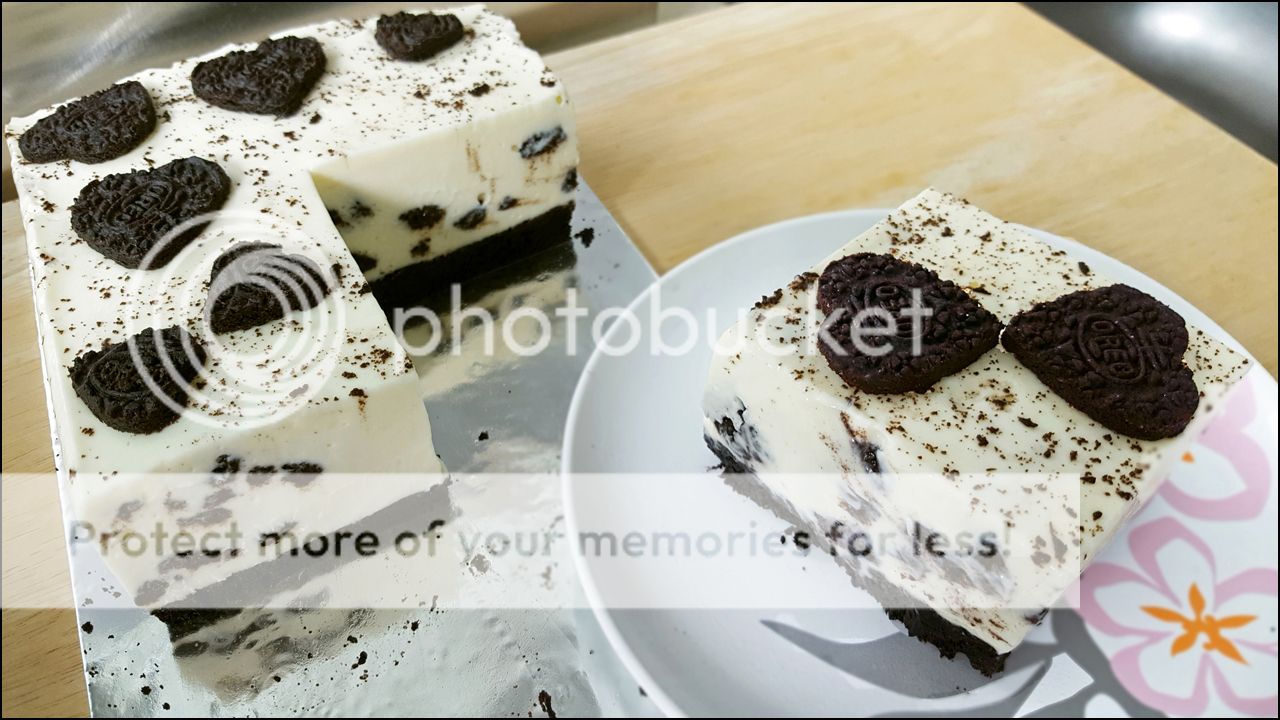 吉利丁是什么?吉利丁=gelatine=明膠=鱼膠。
吉利丁是什么?吉利丁=gelatine=明膠=鱼膠。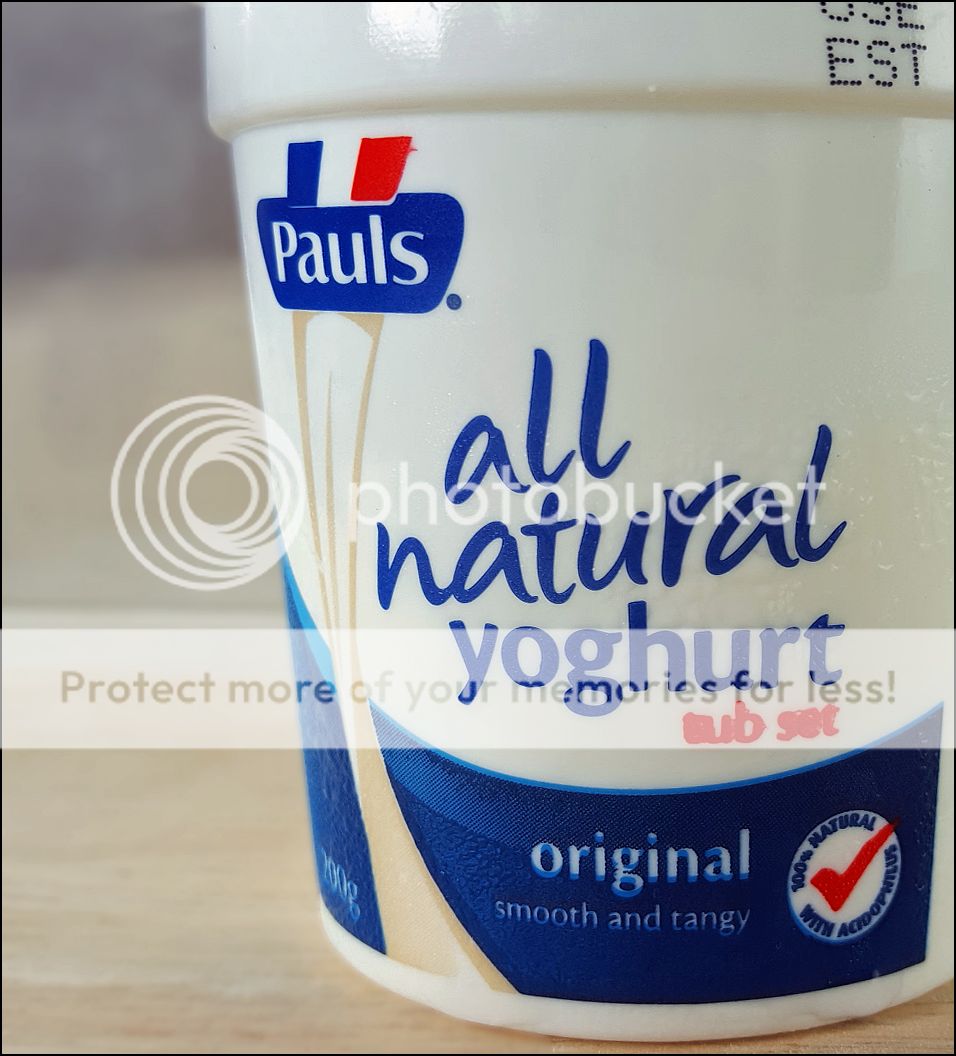
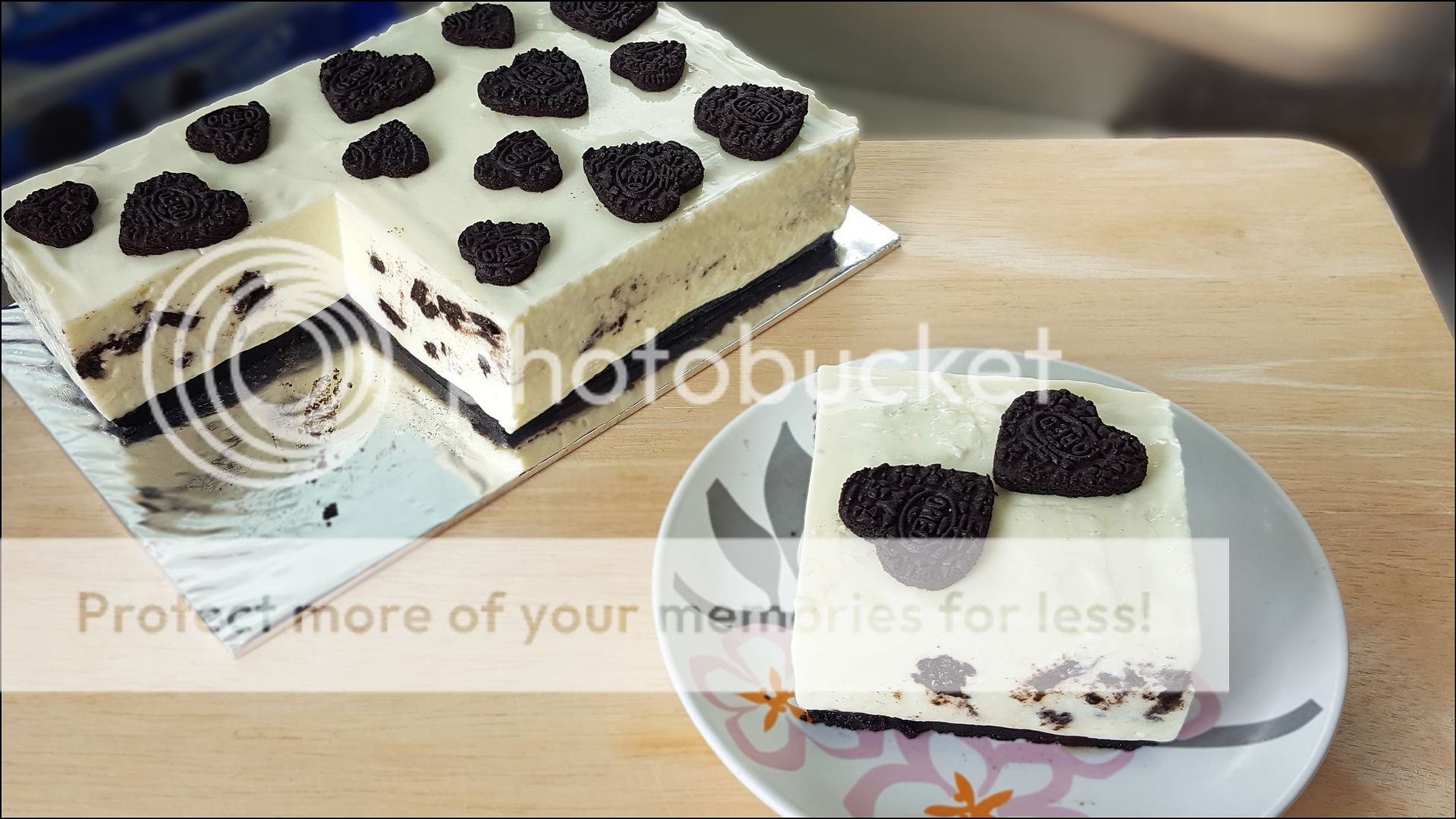
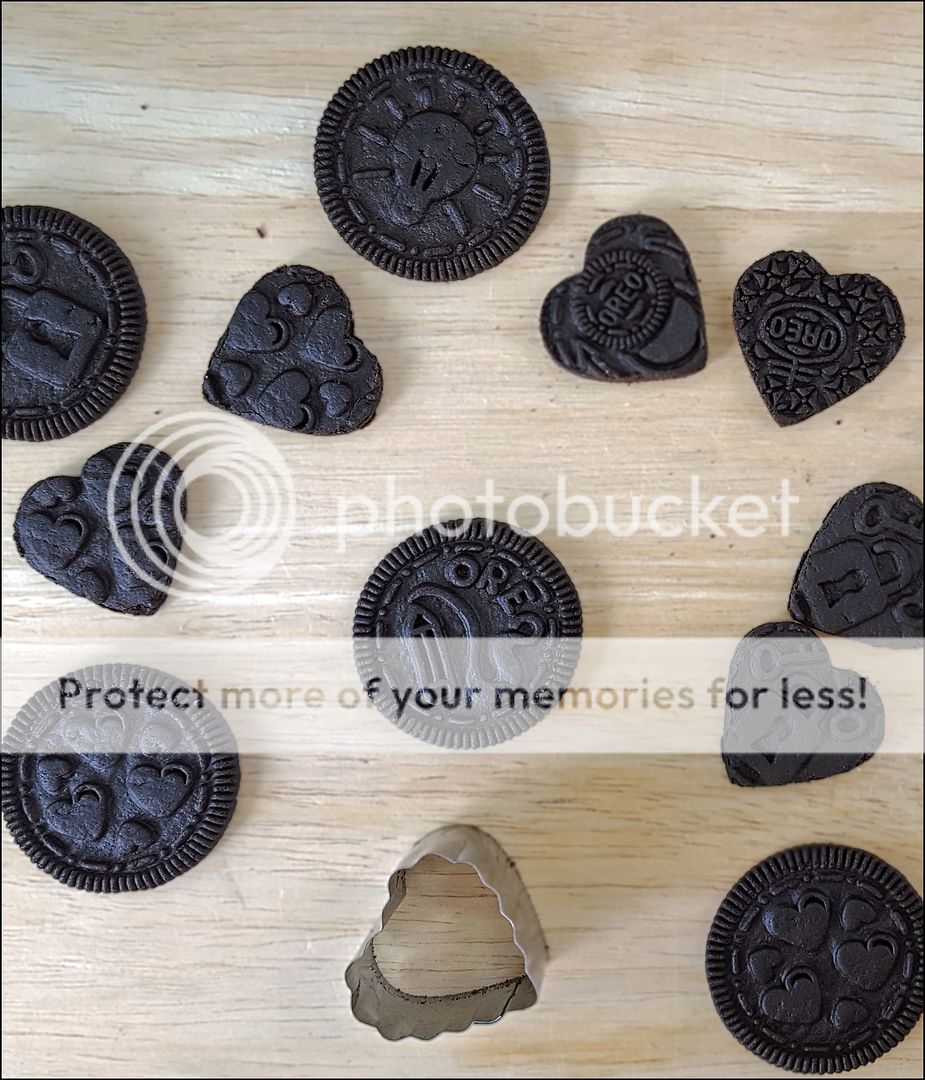 3)装饰做法:用心形模把饼干切成心形,9 个 3 cm,8 个 2 cm。
3)装饰做法:用心形模把饼干切成心形,9 个 3 cm,8 个 2 cm。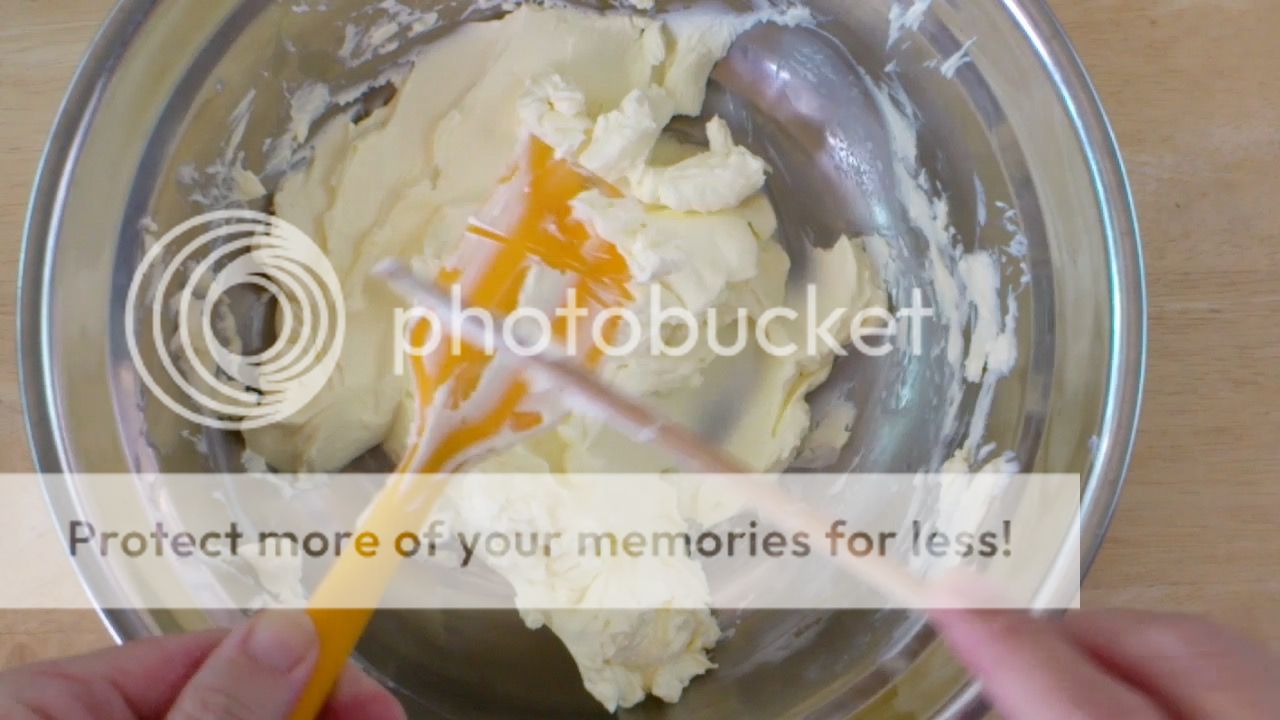 Cream cheese turns watery when it's mixed too much. The change is irreversible.
Cream cheese turns watery when it's mixed too much. The change is irreversible.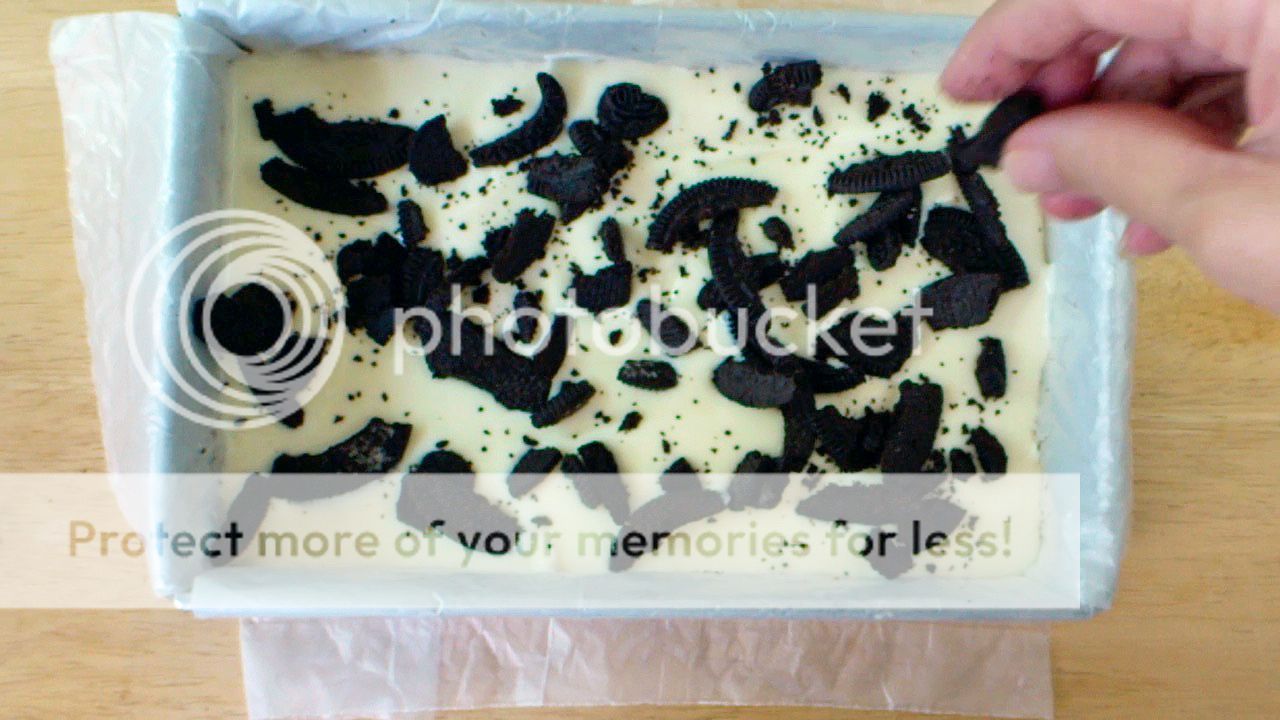 There're broken Oreo pieces in my cheesecake. I scatter the cookies between 3 layers of cream cheese mixture.
There're broken Oreo pieces in my cheesecake. I scatter the cookies between 3 layers of cream cheese mixture.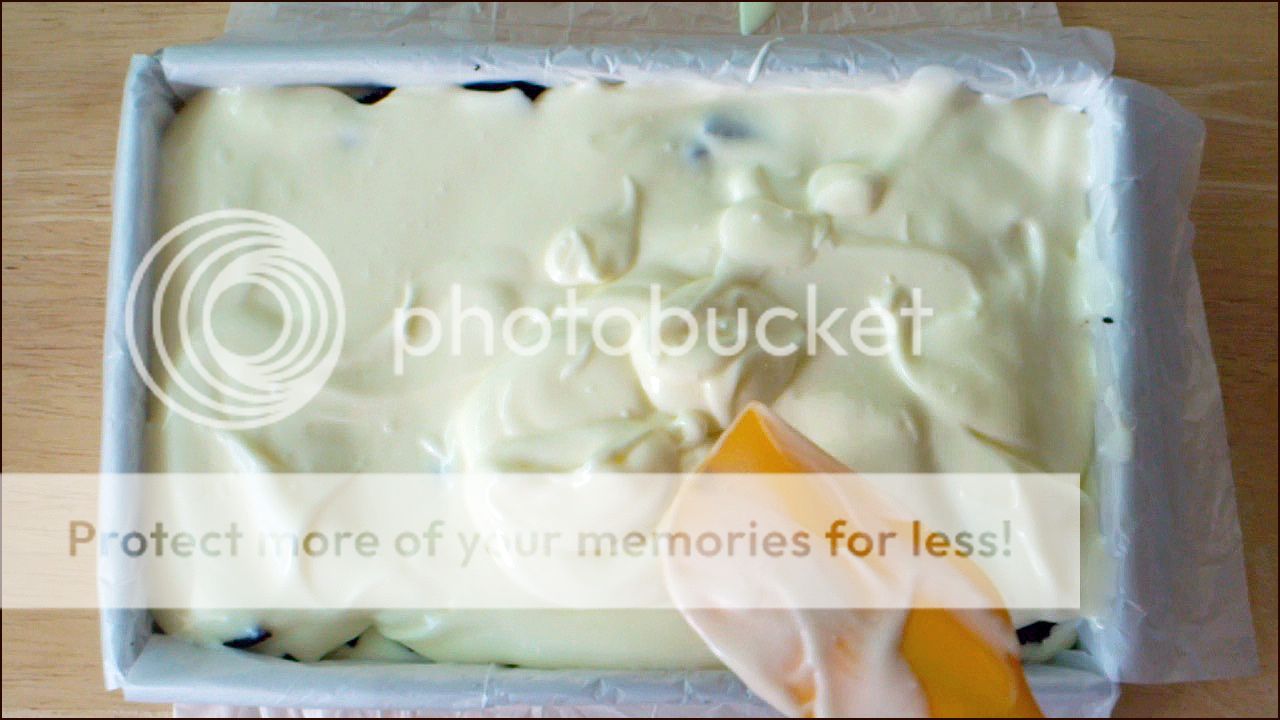 What's the right consistency? If the cream cheese mixture is level – like water – after it's poured, it's too thin. If it isn't level, but it is after you shake it, that's just right.
What's the right consistency? If the cream cheese mixture is level – like water – after it's poured, it's too thin. If it isn't level, but it is after you shake it, that's just right.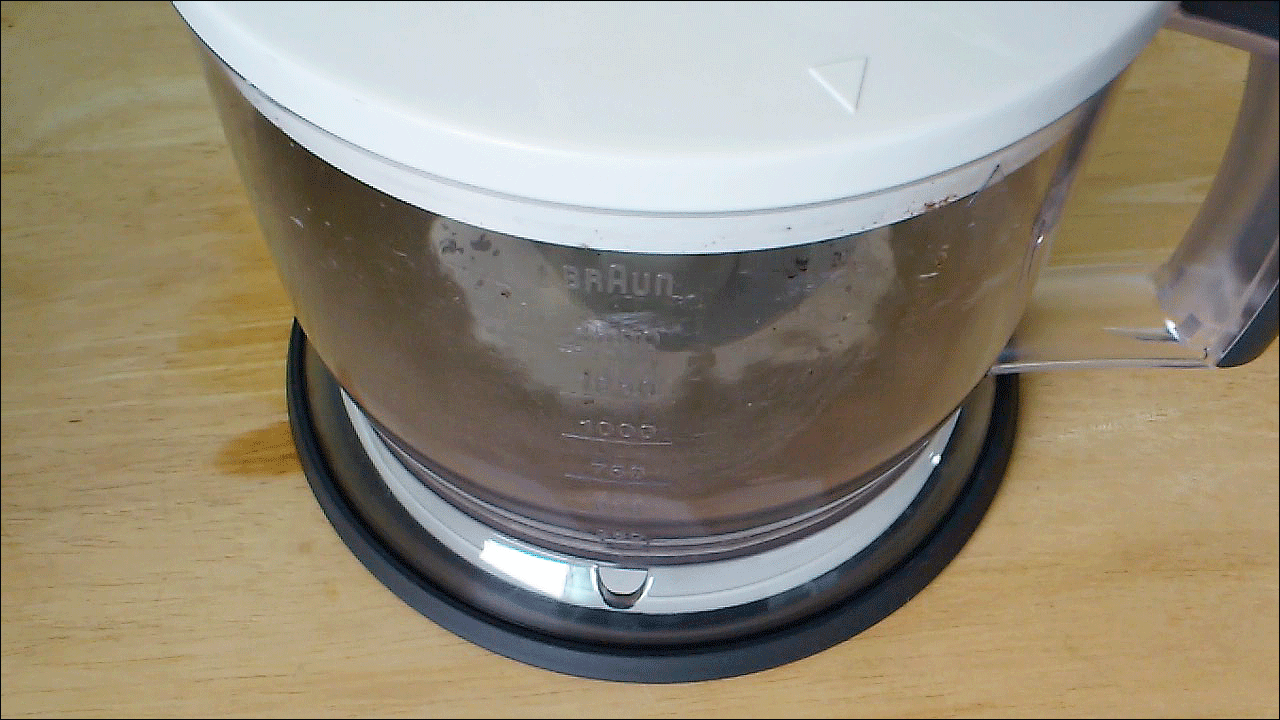 Cheesecake crust is made with cookie crumbs and butter. Some people melt their butter before whizzing it with cookies in a food processor. That's not necessary at all. Food processors can pulverise solid butter in seconds. Melt the butter only if you're crushing and mixing by hand.
Cheesecake crust is made with cookie crumbs and butter. Some people melt their butter before whizzing it with cookies in a food processor. That's not necessary at all. Food processors can pulverise solid butter in seconds. Melt the butter only if you're crushing and mixing by hand.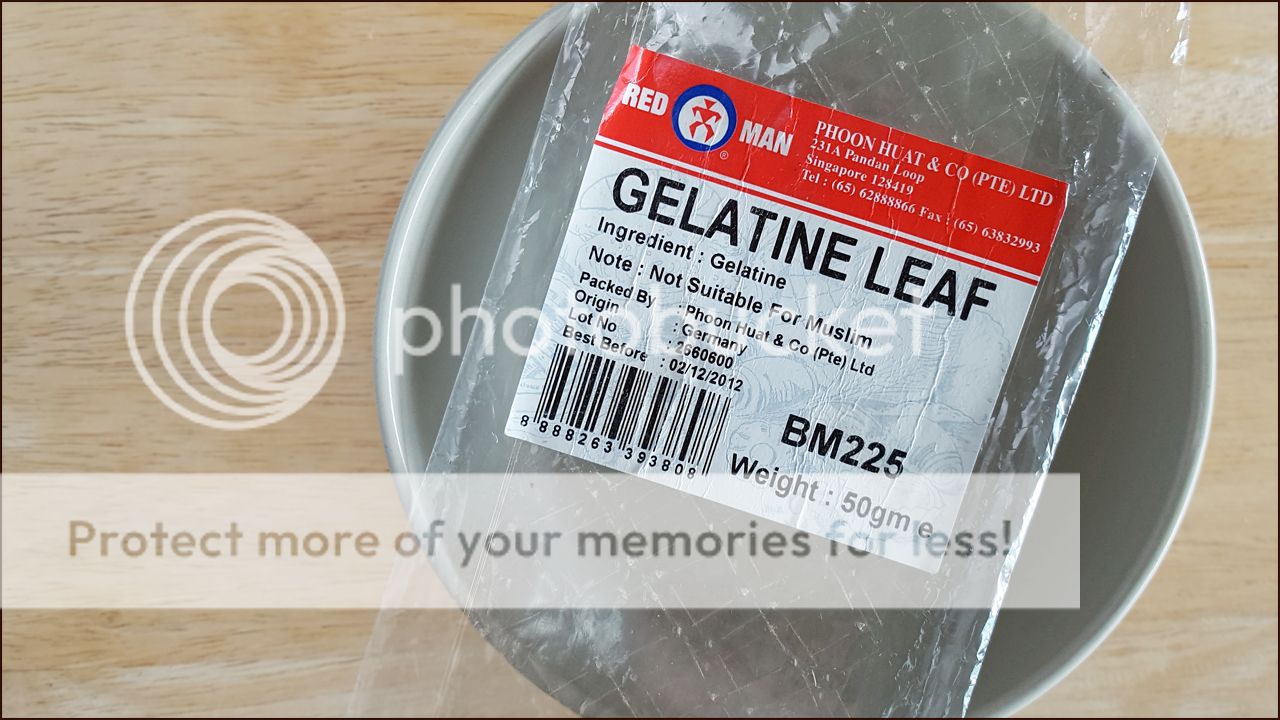 The amount of gelatine powder for replacing 3 gelatine leaves varies with the powder's Bloom number:
The amount of gelatine powder for replacing 3 gelatine leaves varies with the powder's Bloom number: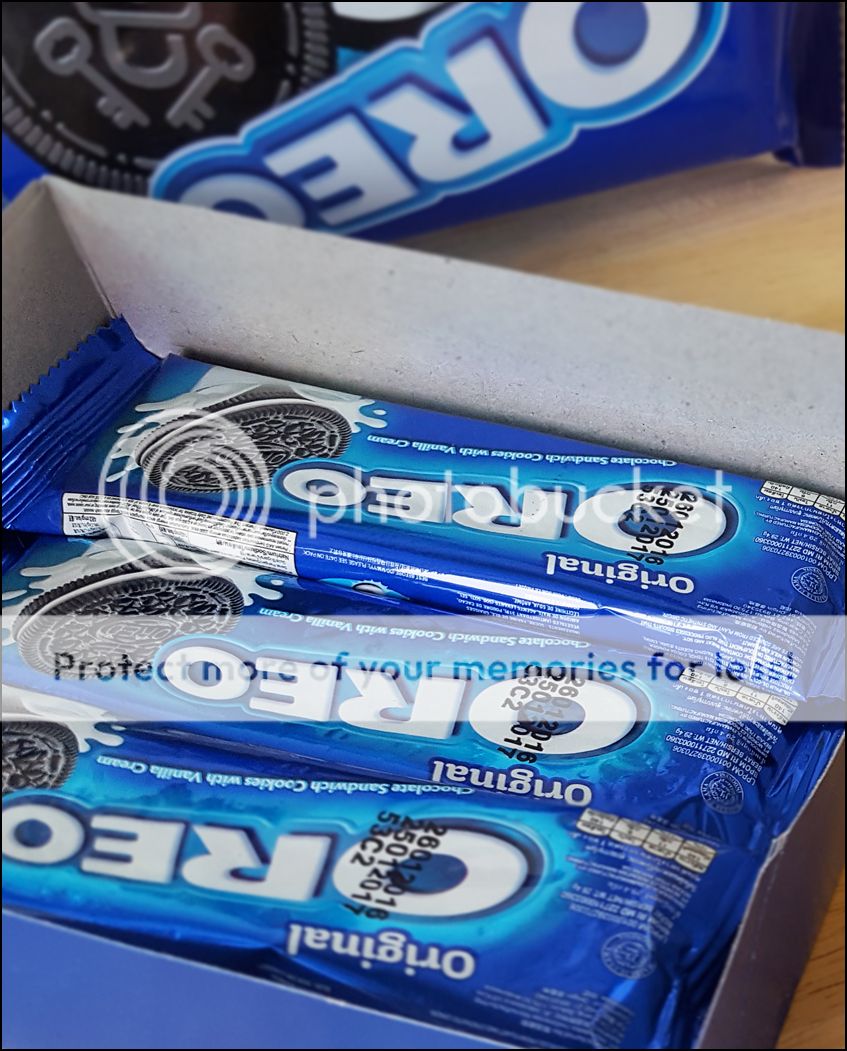 (Recipe for one 8" x 5" x 2" cake)
(Recipe for one 8" x 5" x 2" cake)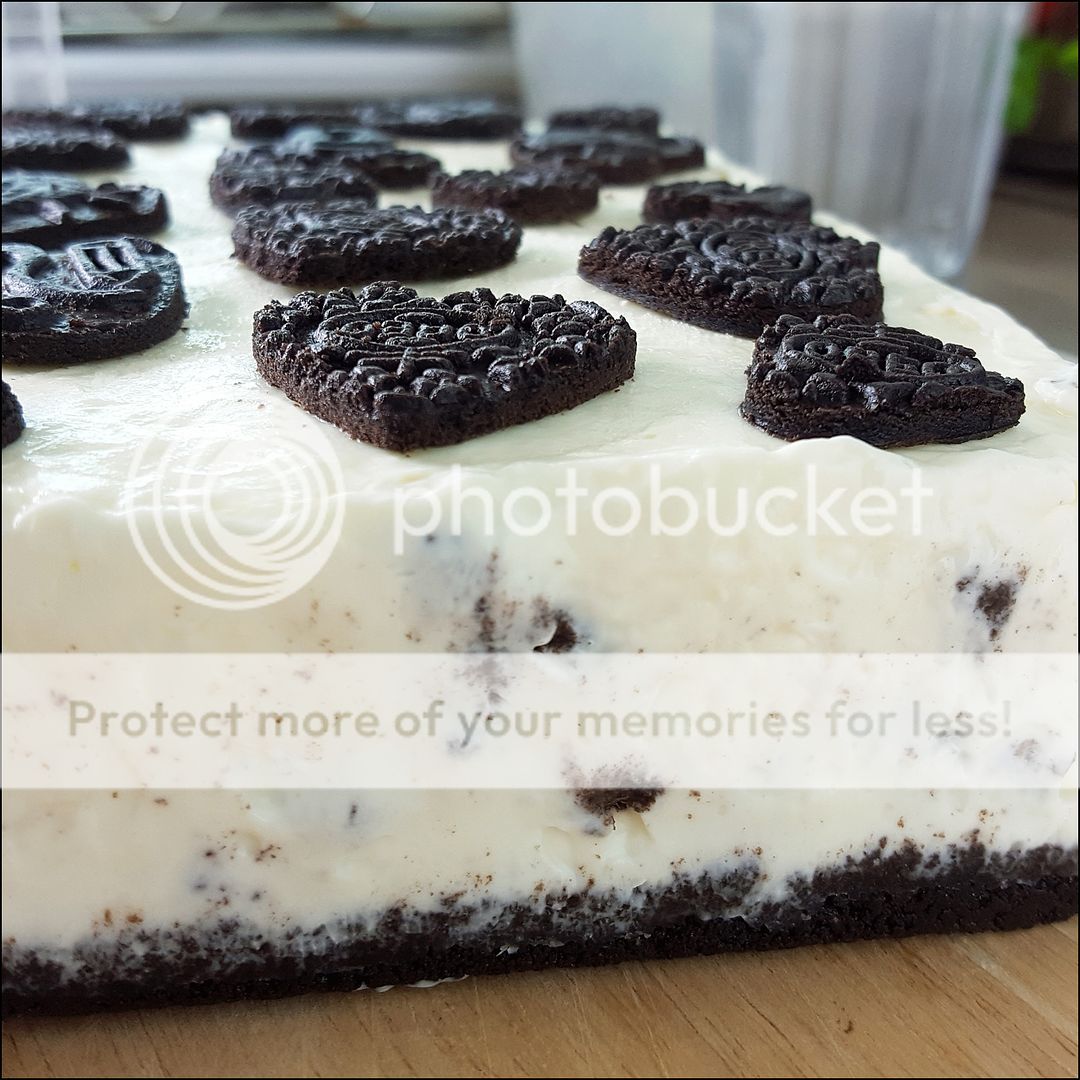 8) Pour almost 1/3 of cream cheese mixture into cake pan. Sprinkle with half of cookies. Repeat layering as before. Finish with layer of cream cheese mixture. Bang cake pan against worktop 3-4 times. Cover and refrigerate till filling is set, about 8 hours. Keep chilled till serving time.
8) Pour almost 1/3 of cream cheese mixture into cake pan. Sprinkle with half of cookies. Repeat layering as before. Finish with layer of cream cheese mixture. Bang cake pan against worktop 3-4 times. Cover and refrigerate till filling is set, about 8 hours. Keep chilled till serving time.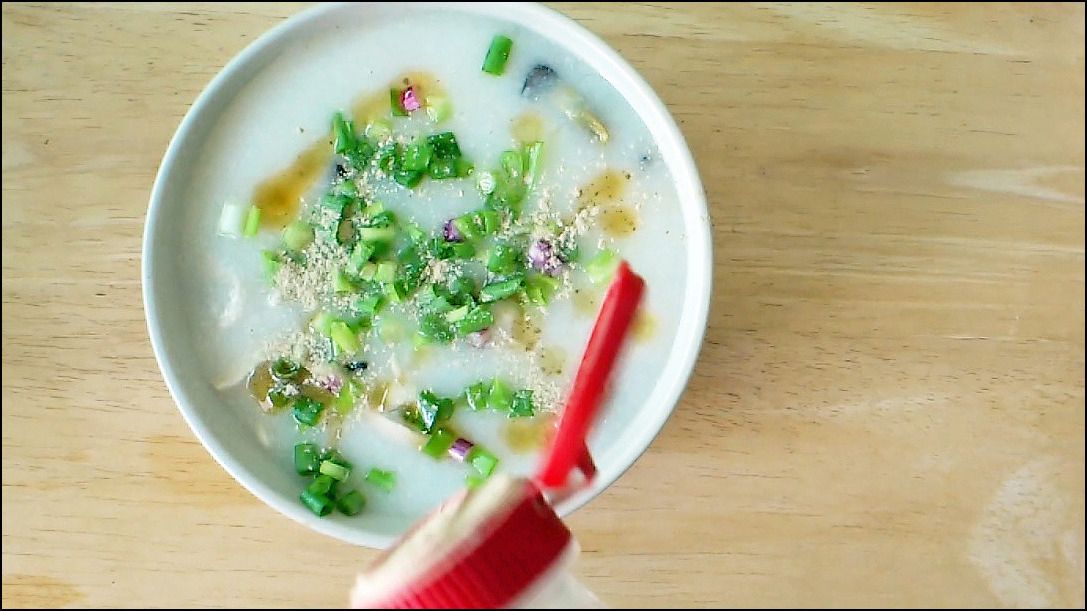 Forget cooking Cantonese porridge the traditional way. That takes way too long.
Forget cooking Cantonese porridge the traditional way. That takes way too long.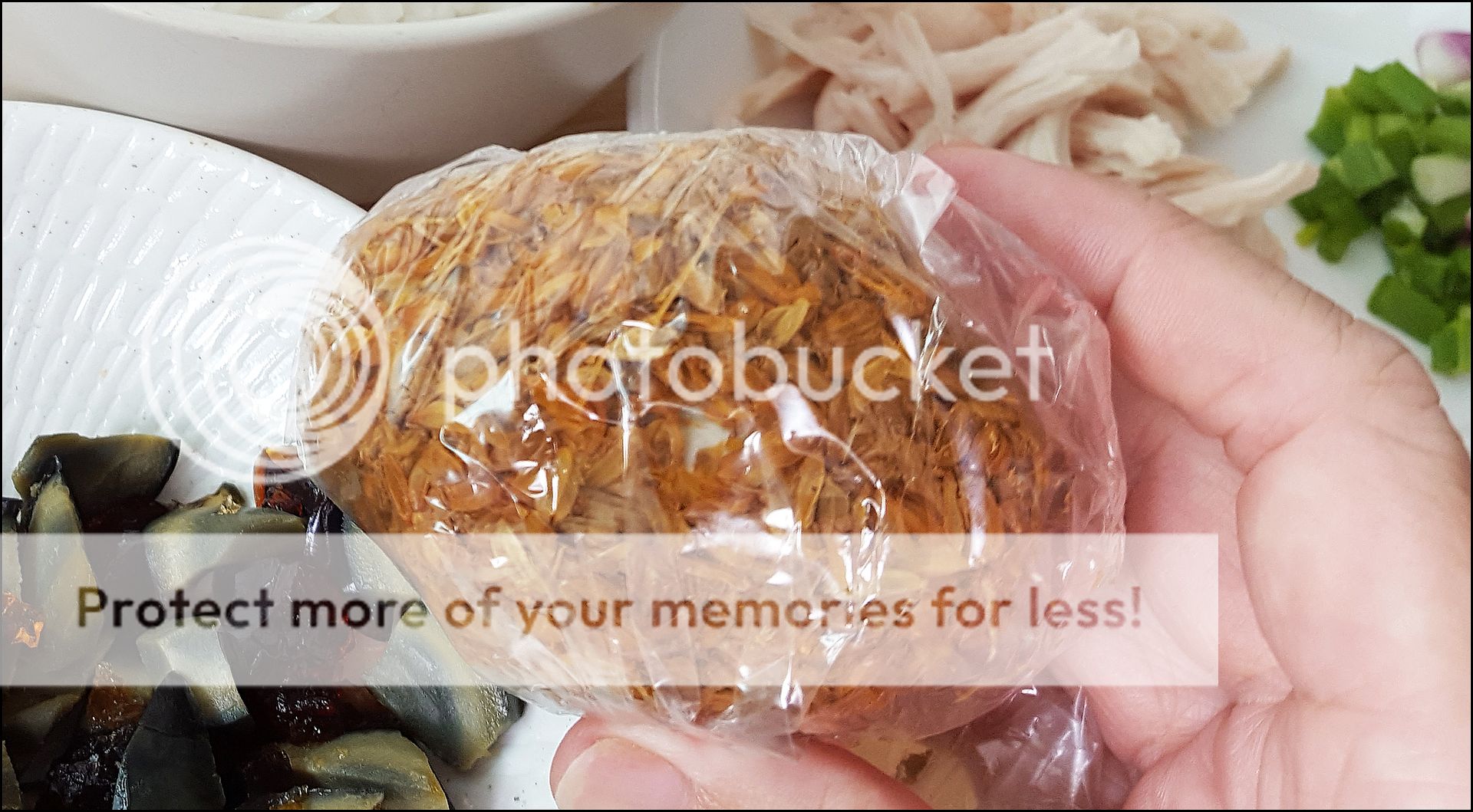 Cutting the cooking time from hours to a mere 5 minutes is quite easy.
Cutting the cooking time from hours to a mere 5 minutes is quite easy. Century egg vs blender is rather like pigeon vs WhatsApp. No one sends messages by bird any more. So why would anyone use alkalized eggs instead of a blender?
Century egg vs blender is rather like pigeon vs WhatsApp. No one sends messages by bird any more. So why would anyone use alkalized eggs instead of a blender? Why do I use boiling water? Because it shortens the cooking time.
Why do I use boiling water? Because it shortens the cooking time.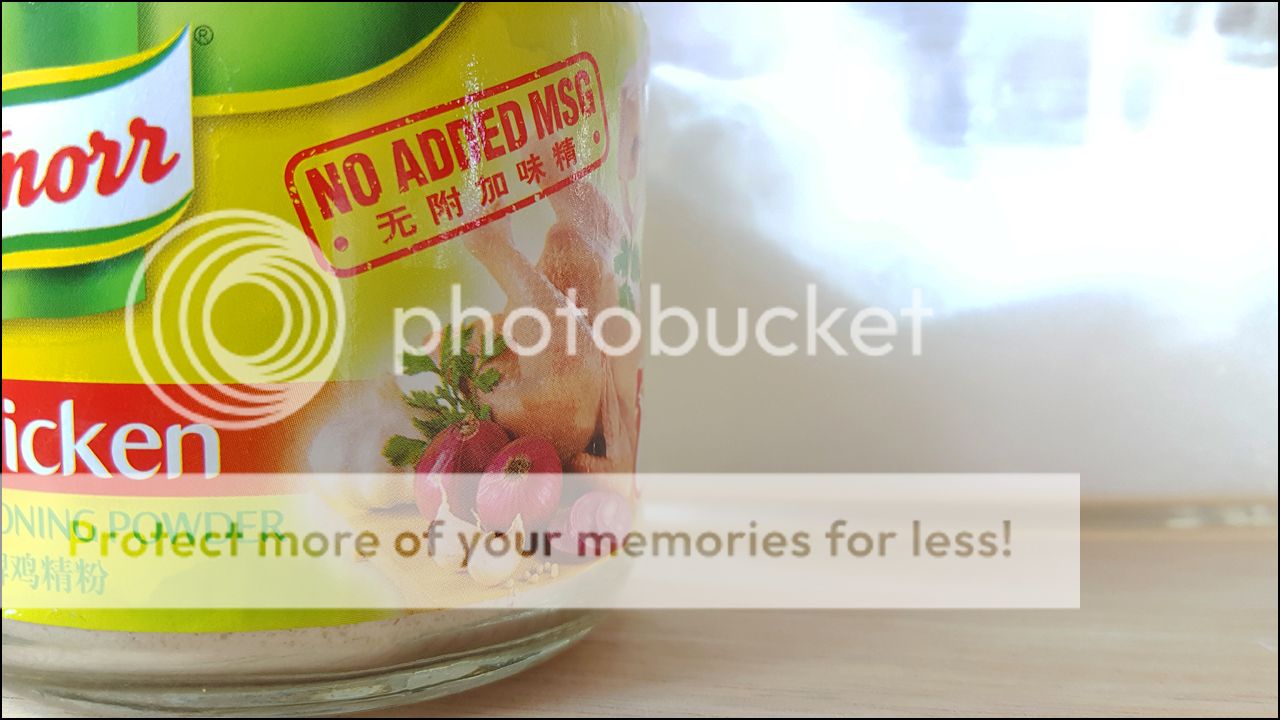
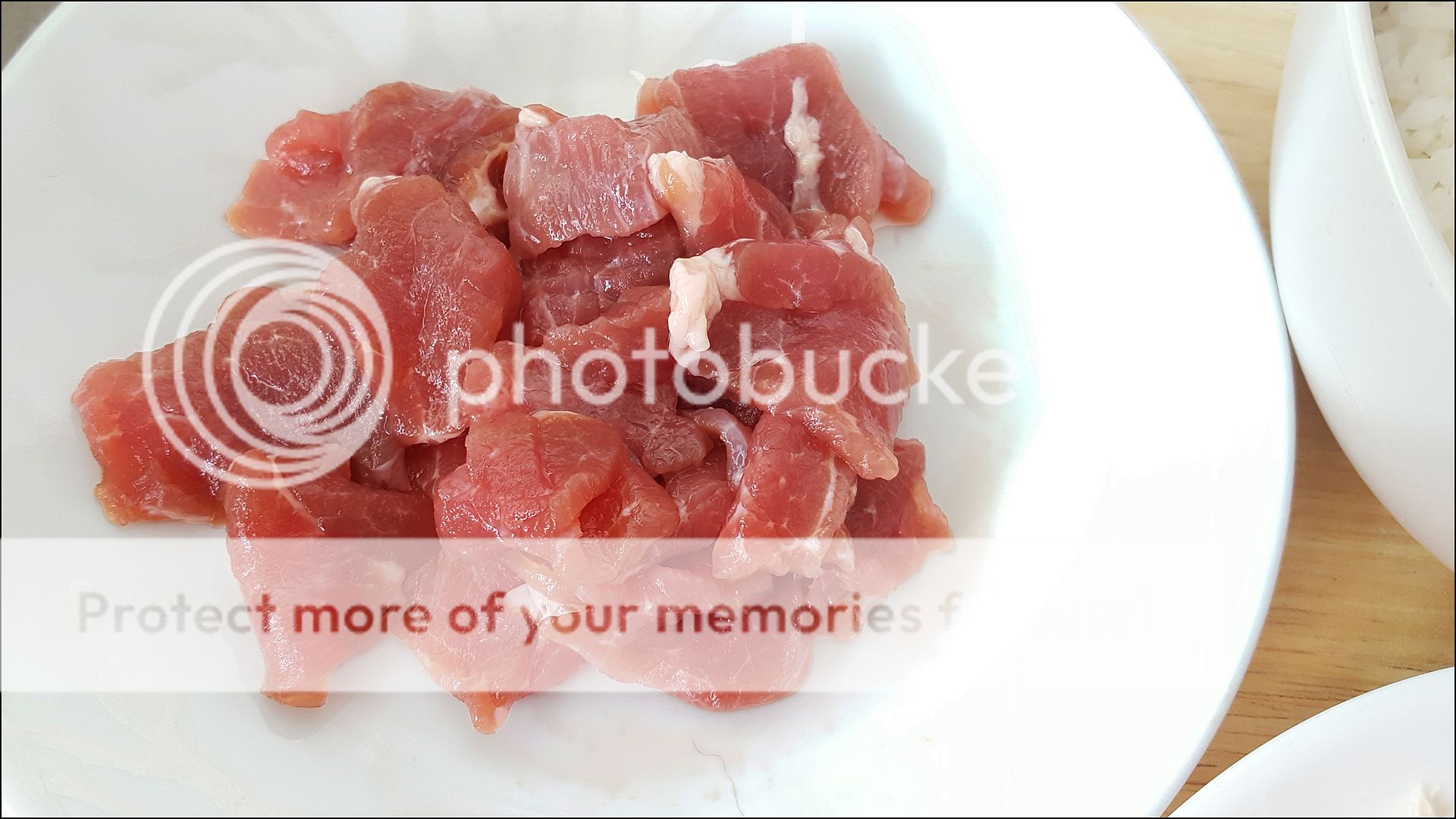 Just so we're clear, 5 minutes is the cooking time for plain porridge. It does not include prepping time for meat, etc; or the time for boiling water; or the "breathing time" for century eggs.
Just so we're clear, 5 minutes is the cooking time for plain porridge. It does not include prepping time for meat, etc; or the time for boiling water; or the "breathing time" for century eggs. (Recipe for 1 bowl)
(Recipe for 1 bowl) ½ century egg, peeled and rinsed
½ century egg, peeled and rinsed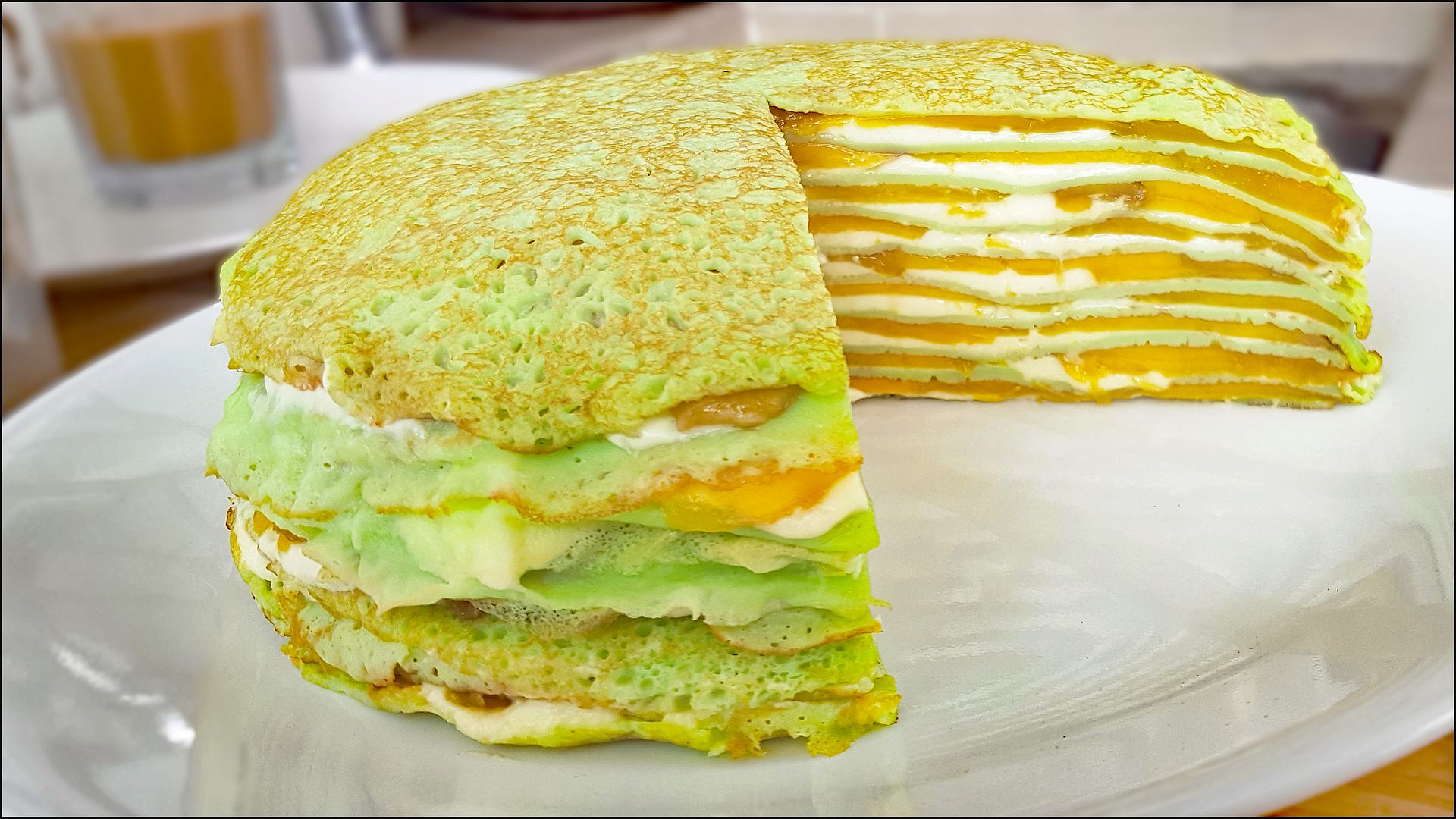 Crepes may be tough and rubbery. Or they may be soft and delicate, that they fall apart in the pan when you flip them.
Crepes may be tough and rubbery. Or they may be soft and delicate, that they fall apart in the pan when you flip them.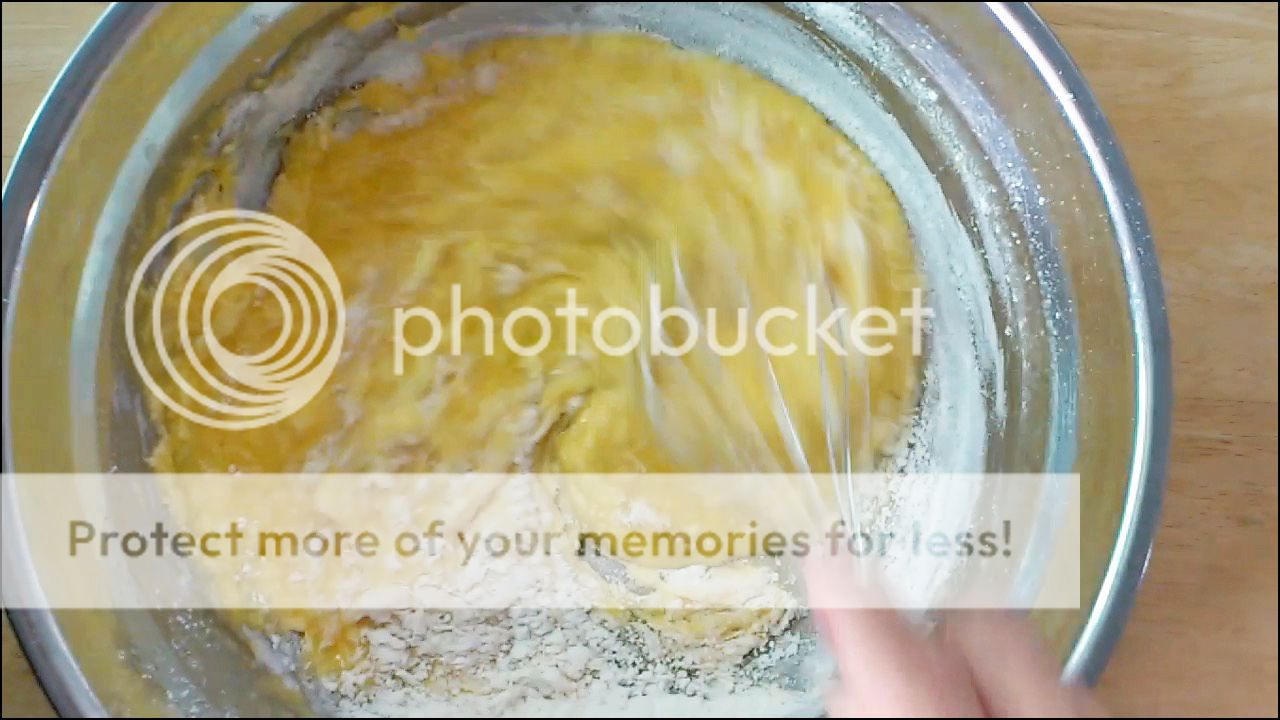 flour. Some flours have more protein; some have less.
flour. Some flours have more protein; some have less.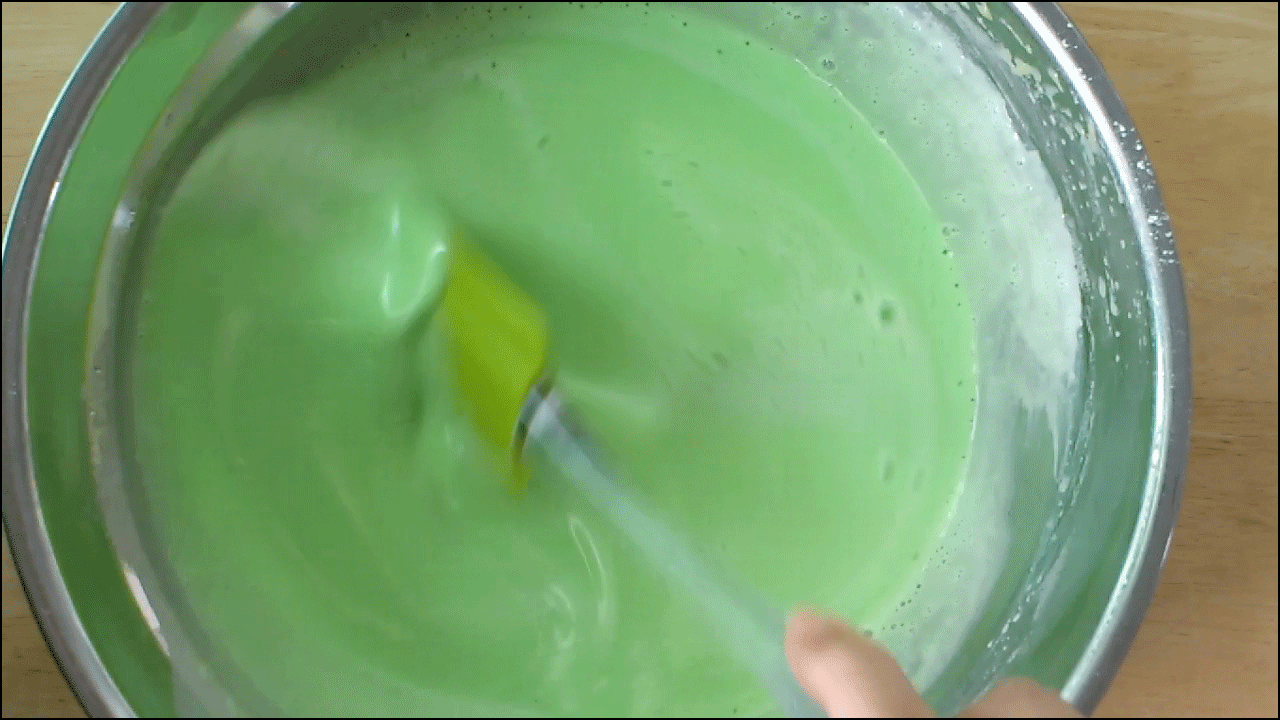 Most crepe recipes tell you to sieve the batter, and let it rest before frying. That's because there's a lot of flour in these recipes. Sieving reduces the amount of flour, because some of it sticks to the sieve. And resting relaxes the gluten. Without these two steps, the crepes would be rubbery.
Most crepe recipes tell you to sieve the batter, and let it rest before frying. That's because there's a lot of flour in these recipes. Sieving reduces the amount of flour, because some of it sticks to the sieve. And resting relaxes the gluten. Without these two steps, the crepes would be rubbery.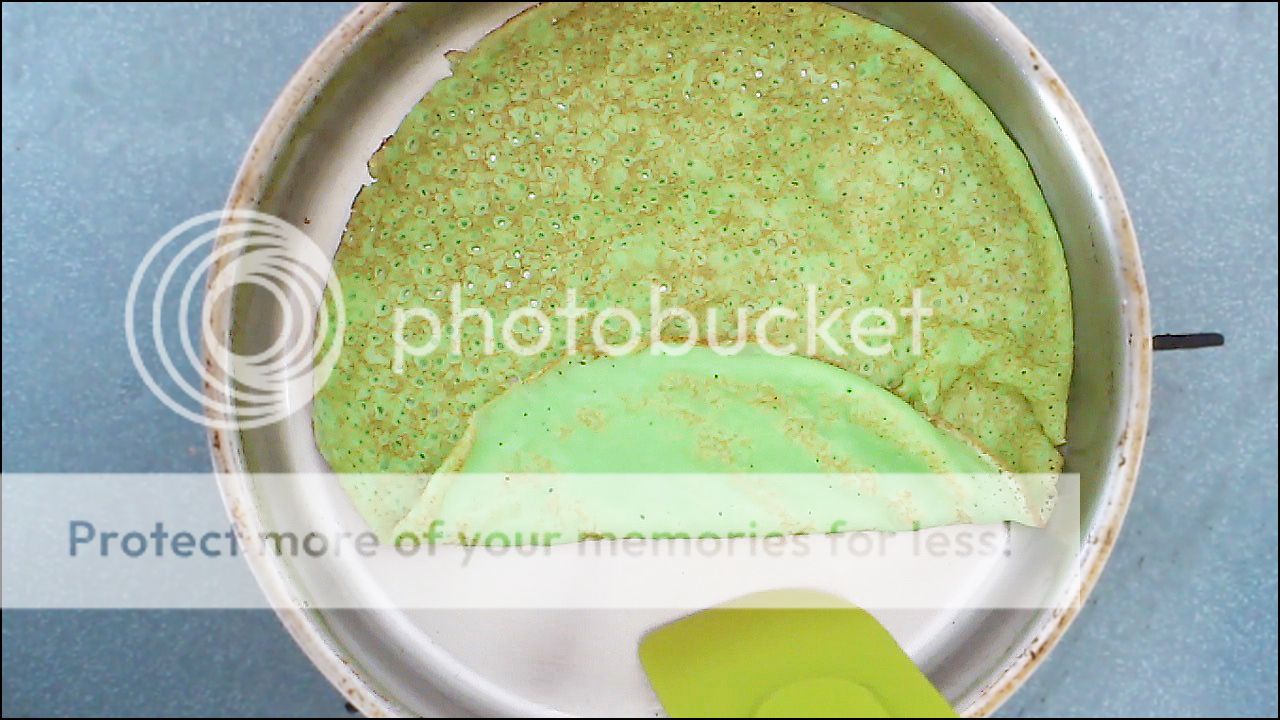 makes the crepes puff up. When crepes puff up more, they're softer.
makes the crepes puff up. When crepes puff up more, they're softer.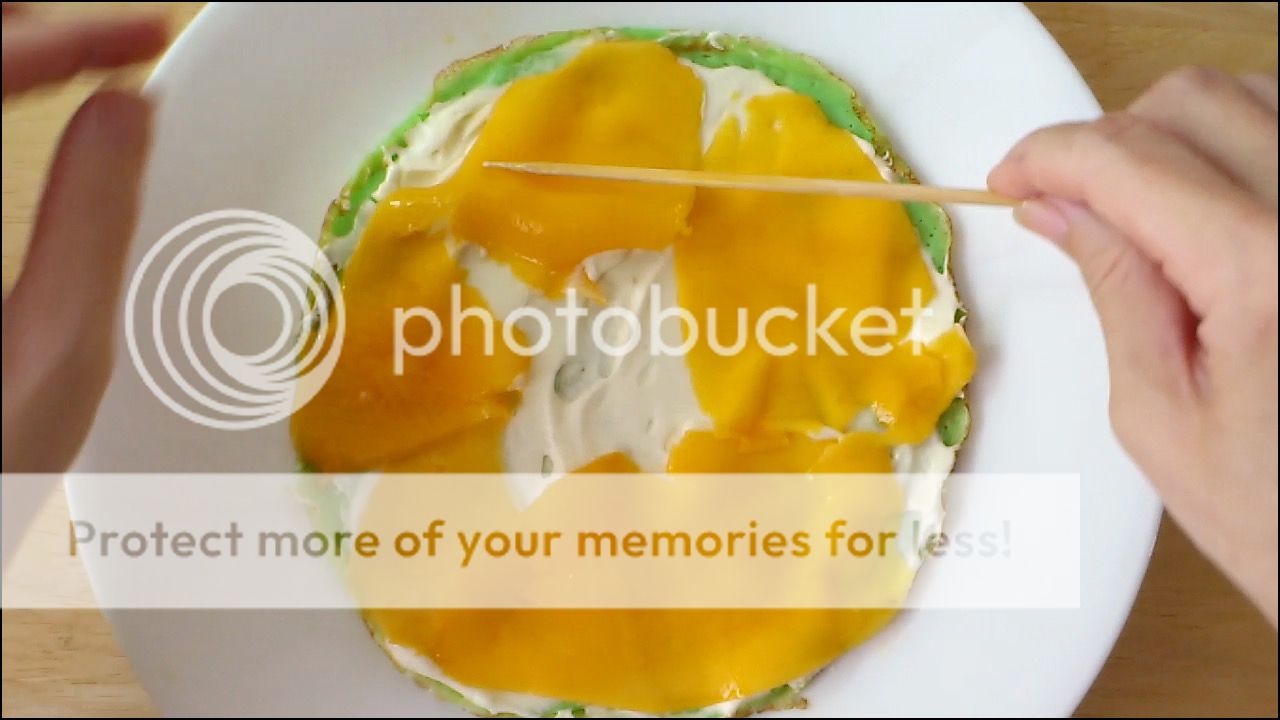 I need to lighten whipped cream with something. Pastry cream? Too much work. Durian? The fridge will smell for days. Strawberries? Too hard. Mangoes? Hey, bingo!
I need to lighten whipped cream with something. Pastry cream? Too much work. Durian? The fridge will smell for days. Strawberries? Too hard. Mangoes? Hey, bingo!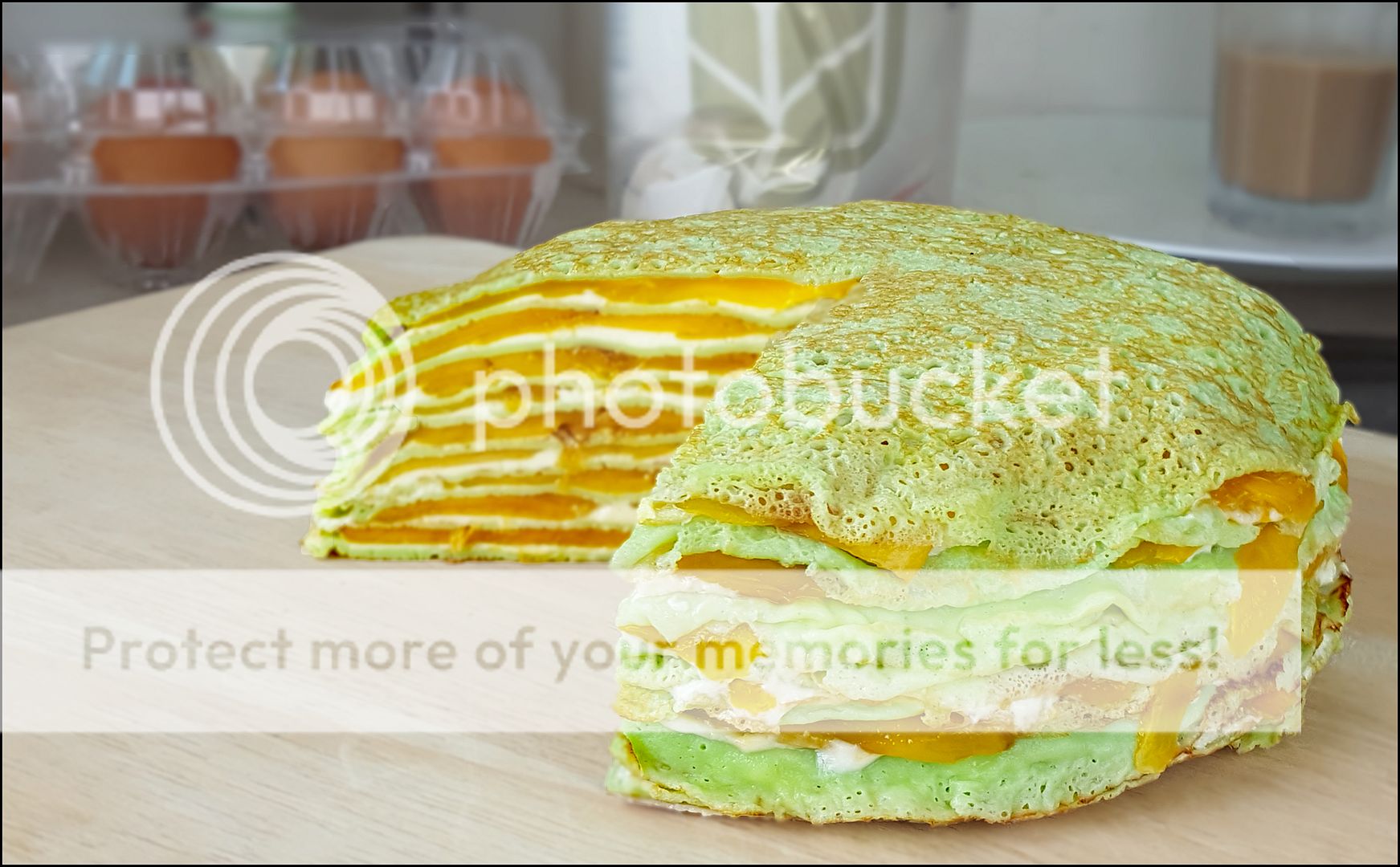 30 g sugar
30 g sugar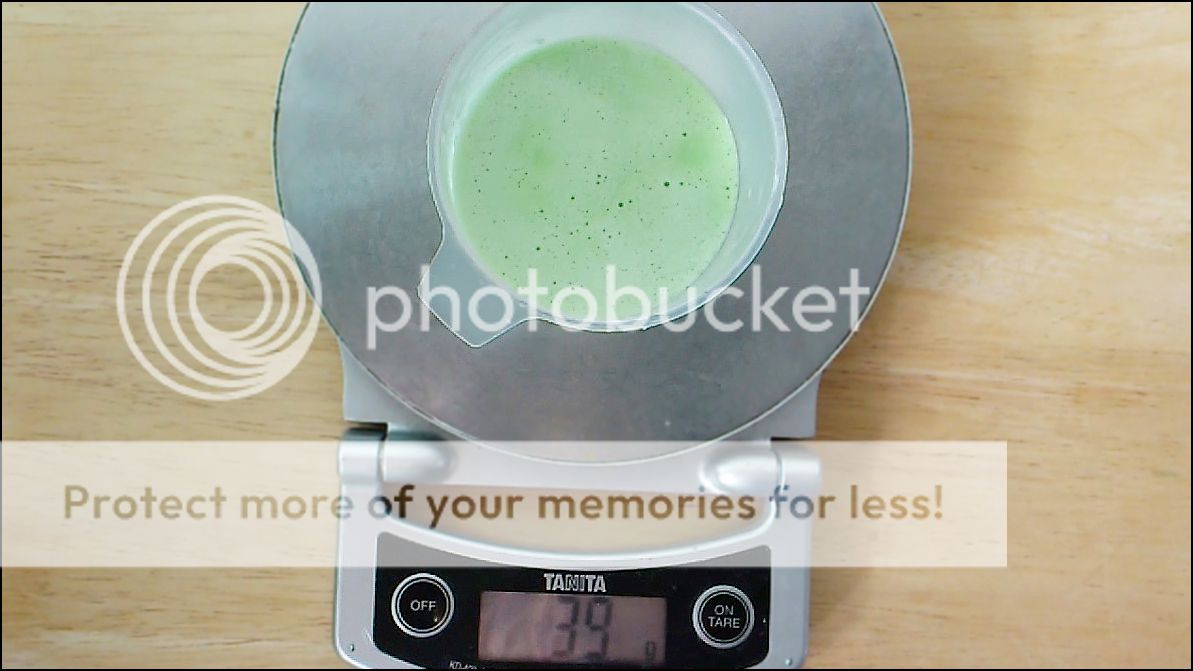 2) Heat 18 cm frying pan over medium-low heat till medium-hot (125-130ºC). Reduce heat to low. Grease pan lightly.
2) Heat 18 cm frying pan over medium-low heat till medium-hot (125-130ºC). Reduce heat to low. Grease pan lightly.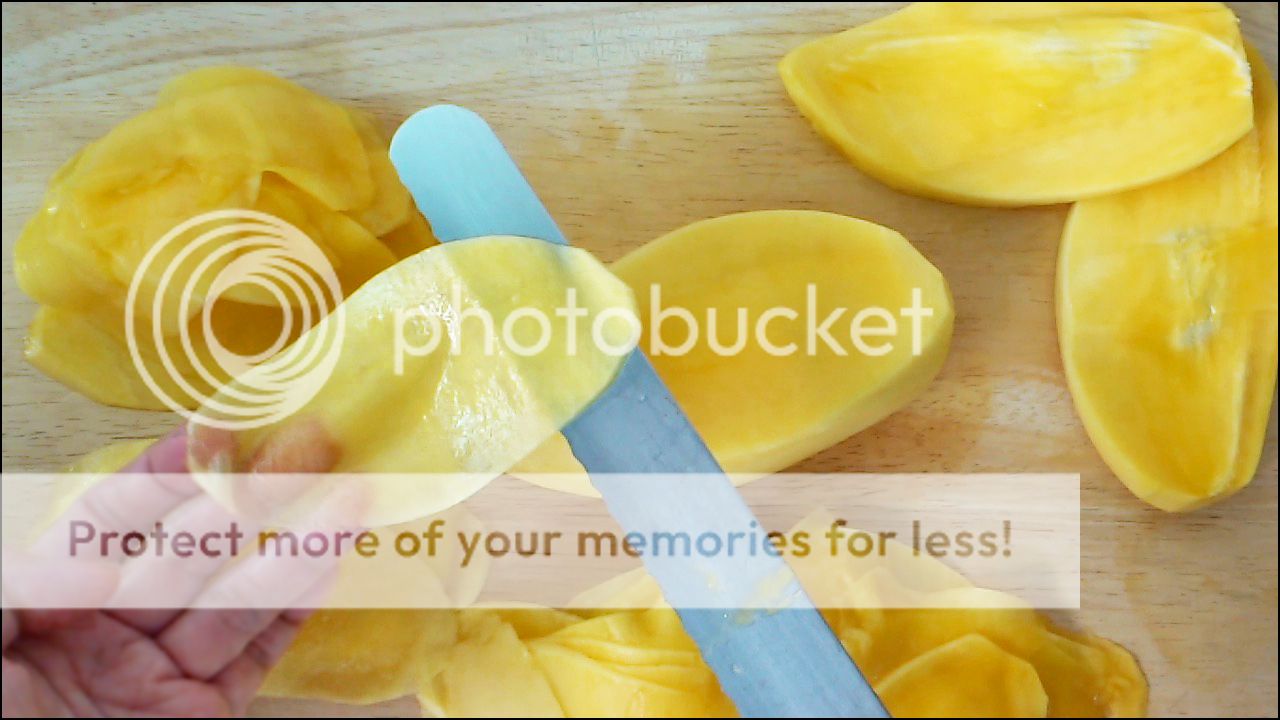 To make filling
To make filling